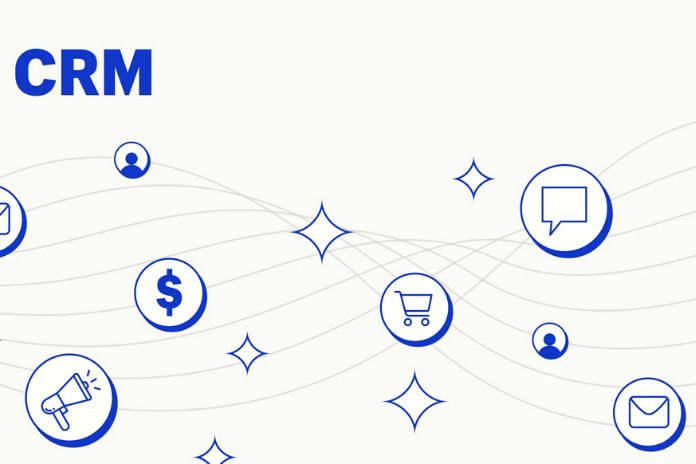For a company with an extensive commercial network throughout the national territory and the islands, we have implemented a CRM system to respond to specific business needs, and in doing so, we have followed these four simple tips:
- establish clear, measurable, and achievable goals through pre-set steps
- start with a defined area and verify that the objectives are consolidated before moving on to the next one
- work hard on adoption, proceed gradually and make the use of CRM a habit
- provide salespeople with an easy-to-use tool that is quick to consult and update with new customer information.
For this client, the objectives defined based on their needs and priorities were:
- Objectives for the sales area: obtain better customer profiling, segmentation of customers already present in the database, and greater collaboration between colleagues.
- Objectives for the marketing area: increase the number of new prospects and manage the generational shift of customers, mainly family businesses recently facing greater digitization.
- Objectives for the customer service area: manage requests for assistance and analysis more smoothly.
The company needed a system that was quick and easy to use even by users unfamiliar with digital tools, which did not require entering a lot of information but a simple update of the personal data already in their possession and which could integrate these three aspects: Marketing, Sales and Customer Service.
Sales: The Three Main Commercial Objectives
For the sales area, three main objectives have been defined to improve the commercial department:
Customer Profiling
Correct Customer Profiling: the information was obtained thanks to the request to fill in fields, for example, “what does the company do” and the contacts were segmented based on certain characteristics (area, crop, type of product sold, and if it is the contact is partner, distributor, end customer).
Once the information on the customer or the user has been obtained, the customer profile and the related timeline are automatically created or updated, i.e., the list of all the activities carried out by the contact since the first engagement, such as page views or emails, requests for contact, download content, etc.
The Management Of Activities
Calendar Integration, Task Scheduling, Email Integration: The sales rep used his email system’s calendar seamlessly integrated with the CRM. The activities and appointments with contacts were recorded directly in the timeline.
Internal Collaboration
Sharing: in the customer file, colleagues can leave a note and mention another colleague, asking him for information or to intervene with a specific contact. Furthermore, the system integrates perfectly with G Suite, thus showing all emails sent and exchanged with contacts in the timeline and allowing colleagues to stay up to date.
Marketing: Qualification Of The Database And Generation Of New Customers
The goal was to generate new customers similar to existing ones; therefore, once the ideal customer profile was drawn, two marketing strategies were applied:
- Marketing Automation: some automatic and repetitive actions have been set up, which have made it possible to qualify the existing contacts in the database. In this case, invitations to events were sent in which the customer was asked to click on a CTA based on his area of interest.
- Inbound Marketing: first of all, the ideal customer’s profile was defined with the help of the Marketing Manager. Subsequently, the new blog was created with free guides for customers to download after completing the form to attract potential customers and profile them by asking them to fill in some mandatory fields, such as name, surname, company, and city. Finally, a page was created to offer free advice and attract interesting contacts.
Customer Service: Simple And Fast Management Of Assistance Requests With The Creation Of Tickets
The introduction of the use of tickets has allowed the company to receive requests from customers quickly and easily.
- Creation of tickets by the salesman: the advantage is the reduction of time and less loss of information, because, for example, when a salesman is visiting or hears from the customer, he can comfortably and quickly enter the request directly from his mobile phone.
- Creation of tickets directly from the site: the advantage for the customer or potential customer is that they can open a support ticket directly from the web page.
The project was undertaken a few months before the Covid emergency and brought great advantages within the company during this period for business collaboration; they had benefits because the information could be shared with remotely usable digital tools, the personal data of customers could be consulted from mobile with all the updated information.
Even the various area managers could see the situation of their agents in real-time through simple reports and visualizations that could be consulted from tablets. The advantages obtained thanks to this project, in addition to convenience and accessibility from various devices, speed in data entry, and ease of use, are:
- clean and up-to-date customer data
- the reduction of wasted time related to the search for customer information and data entry, thanks to the sharing in a single environment of a simple and updated customer file with the relative timeline, in which all the actions performed by users appear
- Better collaboration between colleagues.
A flexible tool suited to the customer’s needs, combined with a project implemented step by step, has brought great benefits to salespeople and the company.
Read Also: What Is Meant By Human Resource Management?

